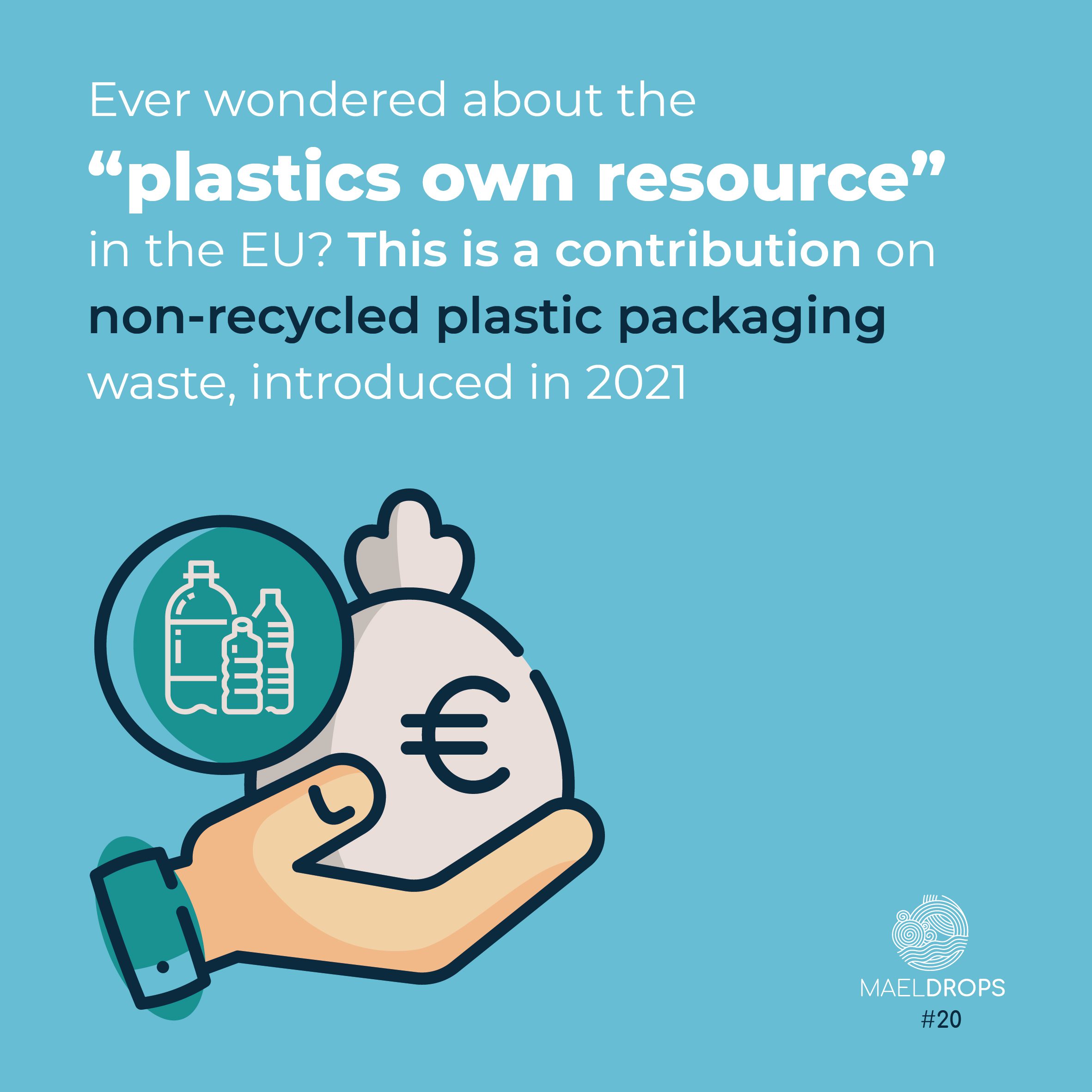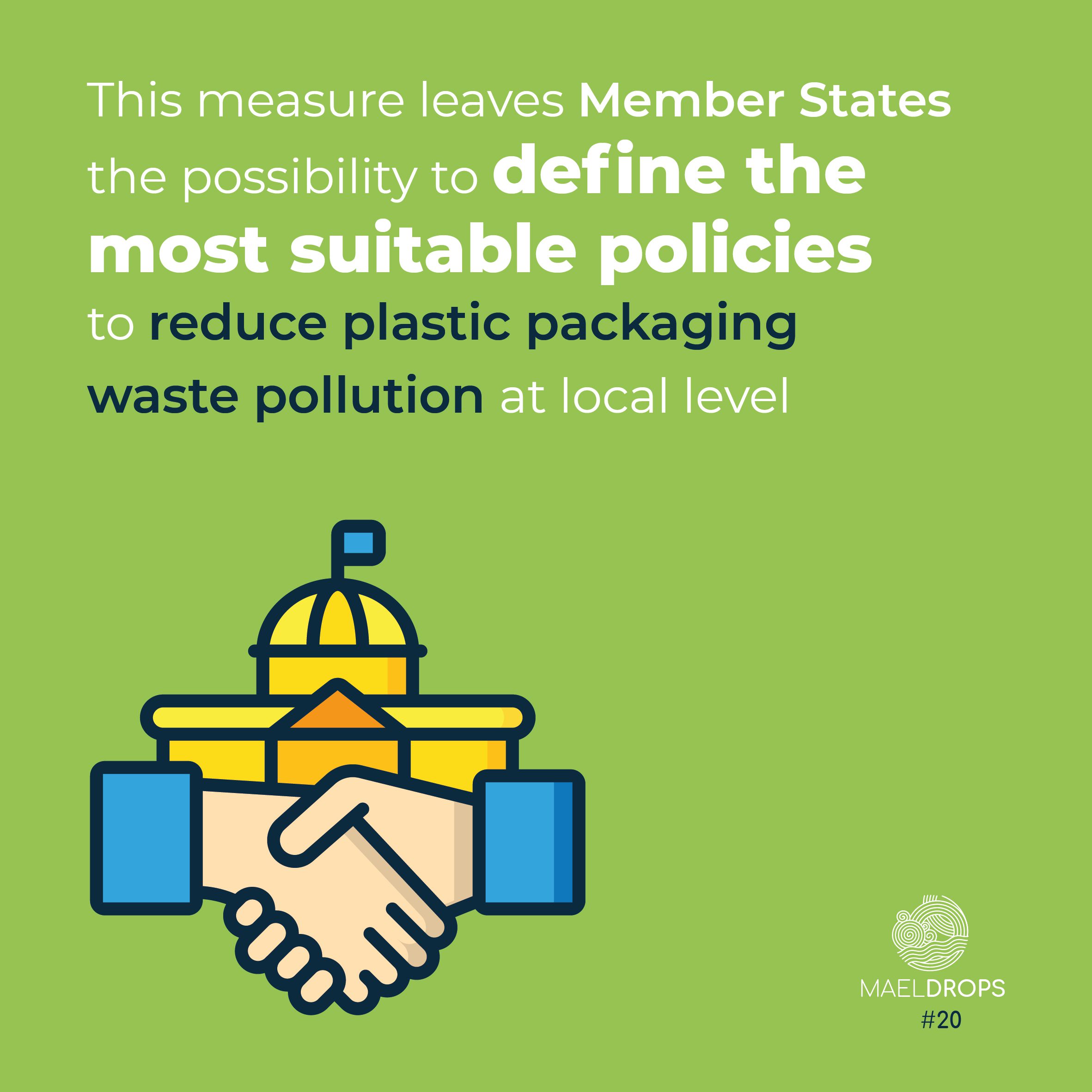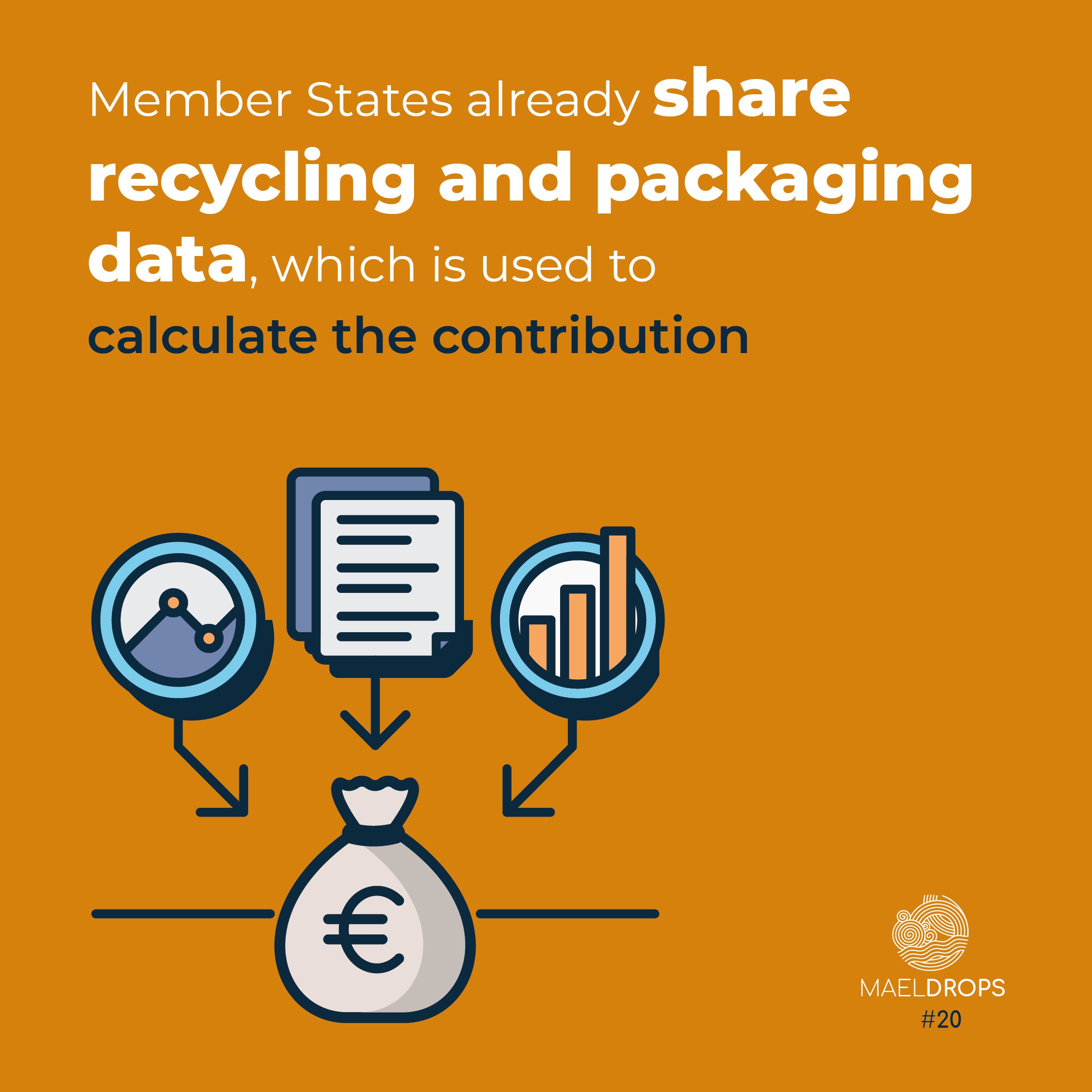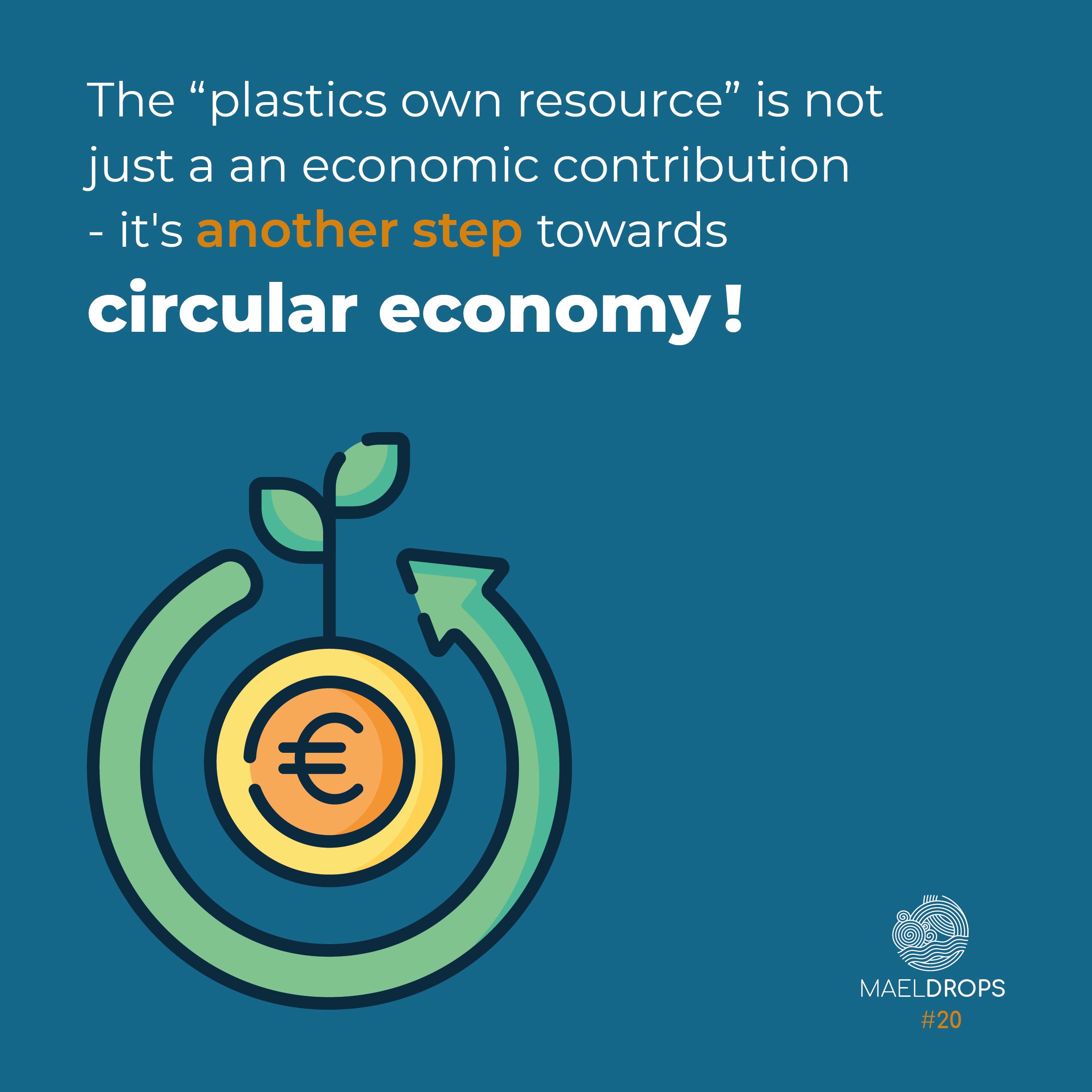MAELDrop #20 | The EU Plastics own resource
Taxes and economic contributions may not be our favorite topics, but in this case, we’re talking about contributions that have an exceptionally important goal. Imagine a world where every step you take to the supermarket or every package you receive at your doorstep doesn’t just contribute to your daily life but also to a healthier planet. This is at the core of the “plastics own resource“, introduced in the European Union in 2021. But what does it mean, and how can it be useful?
Here’s how it works: Member States are required to make contributions based on the amount of non-recycled plastic packaging they produce. A “uniform call rate” (0.80 euro/kg) is applied to the weight of non-recycled plastic packaging waste. There’s an important detail: the contribution is intelligently designed not to burden the less affluent EU countries excessively.
But how is this contribution calculated? It’s quite straightforward, using data. Member States are obliged to provide information on how much plastic packaging is used and how much of it is actually recycled. This data is collected by Eurostat and made publicly available, promoting transparency.
This own resource doesn’t dictate how Member States should utilize the funds generated by this contribution. Some of them have opted for (or plan to implement) a national “plastic tax.” This means they can choose how to invest tax revenues so to have the maximum impact at the local level.
While the initiative has sparked some criticism and doubts (for instance, there are concerns it may lead to a shift towards even more environmentally impactful packaging materials), the “plastics own resource” is much more than just an economic contribution. Aligned with various other directives and initiatives like the EU Plastic Strategy and the Circular Economy Action Plan, it represents another step towards circular economy



